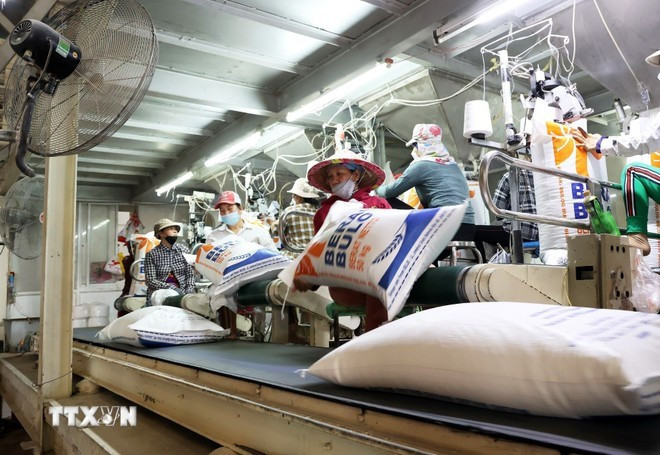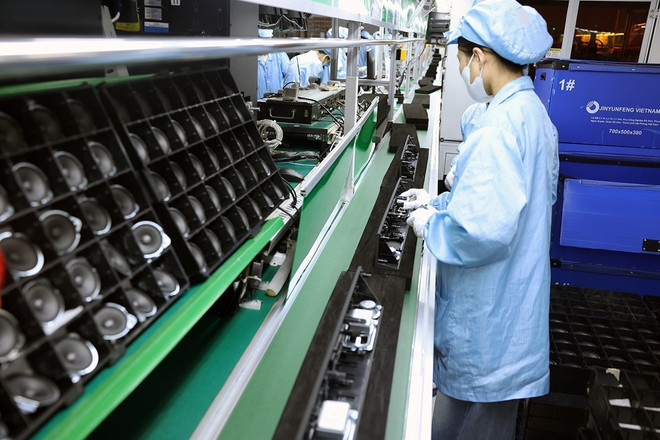As Vietnam eyes export growth target of at least 12%, contributing to realising the GDP expansion of 8.3-8.5% this year and double-digit, PM Chinh outlined key measures across multiple sectors.
Vietnam’s total trade revenue is estimated at 673.21 billion USD as of September 15. (Photo: VNA)
Prime Minister Pham Minh Chinh issued a directive on September 23 outlining key measures to boost exports and diversify foreign markets as the country is navigating complicated global trade dynamics.
With various harmonious measures put in place, Vietnam’s total trade revenue was estimated at 673.21 billion USD as of September 15, up 17.2% year-on-year, with export climbing 15.8% to 325.26 billion USD while import rising 18.8%to 311.95 billion USD.
Despite these gains, the Prime Minister warned that global uncertainties, including strategic competition, conflict in several regions, and the US’s reciprocal tariffs, pose significant risks for Vietnam’s export sector.
As Vietnam eyes export growth target of at least 12%, contributing to realising the GDP expansion of 8.3-8.5% this year and double-digit, PM Chinh outlined key measures across multiple sectors.
The Ministry of Industry and Trade will spearhead efforts to monitor market conditions and trade policies of partner countries, implementing flexible and timely solutions to boost exports while addressing emerging challenges. The ministry will focus on capitalising on existing Free Trade Agreements (FTAs) while working to sign new ones to tap such potential markets as the Middle East, Africa, Latin America, Central Asia, Eastern Europe, India, Pakistan, and Brazil. Besides, it must push to finalise free trade pacts with Mercosur and the Gulf Cooperation Council in Quarter 4.
 Rice packaged for export in An Giang province (Photo: VNA)
Rice packaged for export in An Giang province (Photo: VNA)Major trade promotion programmes will also be launched in key markets, including the US, the EU, China, Japan, the Republic of Korea, ASEAN, and India, while efforts to expand e-commerce and digital trade must be intensified.
Meanwhile, the Ministry of Agriculture and Environment is responsible for joining hands with competent agencies to improve the quality of the agricultural products, ensure clear geographical indications, and promote the production of low-carbon goods.
The directive urges enhanced cooperation with international partners to open new markets for Vietnamese fruit and farm products, while also strengthening food safety and compliance of technical standards from major importers like China, the EU, the US, Japan, the Republic of Korea, and Australia.
Other solutions sketched out in the directive include refining mechanisms and policies to create a transparent investment environment, controlling product quality during customs clearance process, preventing imports of low-quality goods, intellectual property violations, and origin fraud, strengthening economic diplomacy, and upgrading transport and logistics infrastructure.
The Ministry of Science and Technology must work to enhance safeguards for intellectual property rights and geographical indications of Vietnam’s potential export products in key foreign markets, while also stepping up training to raise exporters’ awareness of intellectual property issues.
 An assembly line for loudspeakers at Tonly Electronics Technology Vietnam Co.,Ltd in Dong Mai Industrial Park, Quang Ninh province. (Photo: VNA)
An assembly line for loudspeakers at Tonly Electronics Technology Vietnam Co.,Ltd in Dong Mai Industrial Park, Quang Ninh province. (Photo: VNA)The State Bank of Vietnam is in charge of managing exchange rates flexibly as well as studying and developing mechanisms to strengthen monetary and banking linkages in line with global commitments and legal frameworks, supporting trade and investment.
Local authorities are instructed to attract multi-national corporations’ large-scale projects with advanced technologies and global value chain participation capabilities. Besides, they must improve information-sharing with producers and packaging facilities to prevent congestion in cross-border agricultural trade.
Industry associations must intensify market information services for their members to enhance proactivity and risk prevention amidst market fluctuations.
Exporters themselves are encouraged to promote investment in science – technology, diversify supply chains, build stronger brands, and target niche markets alongside traditional ones./.